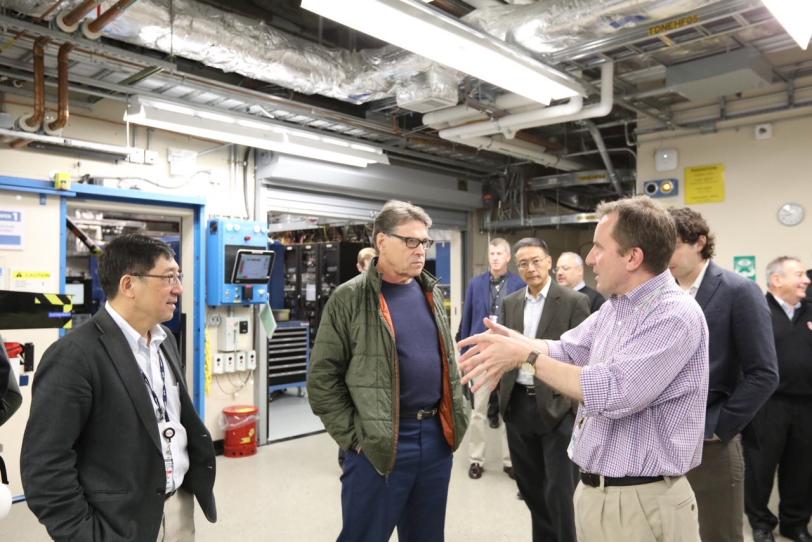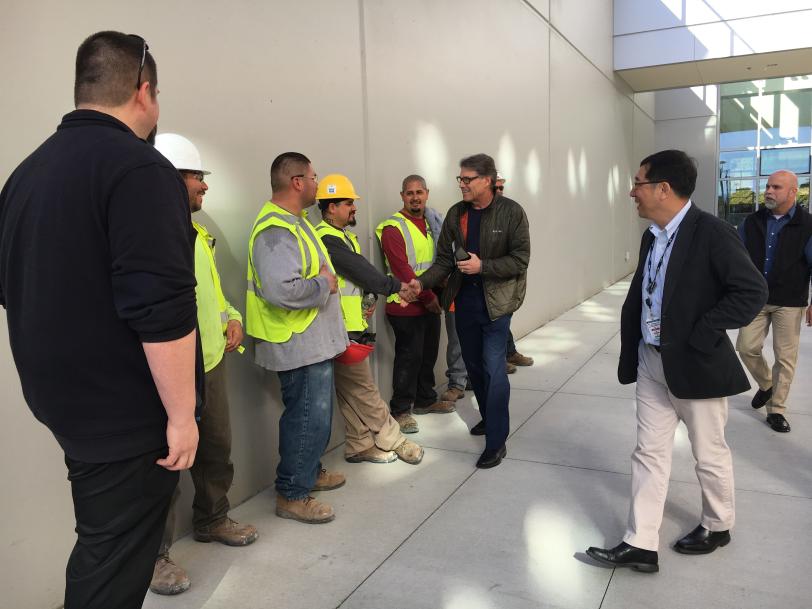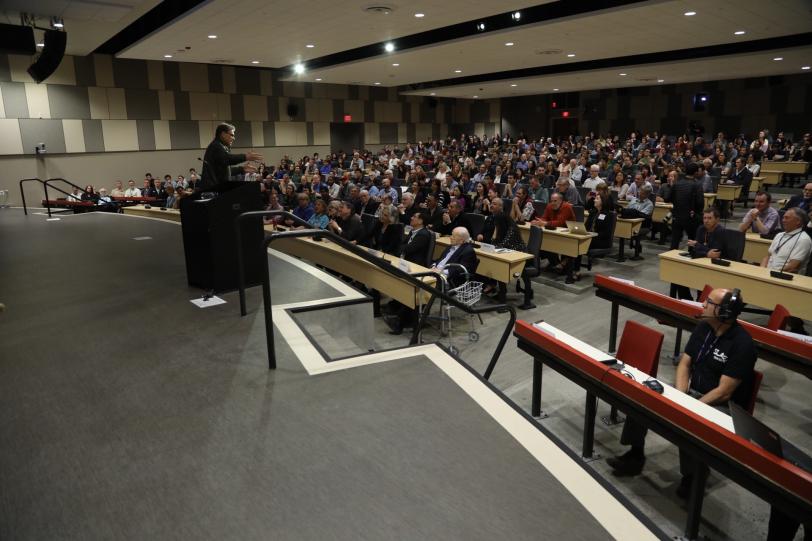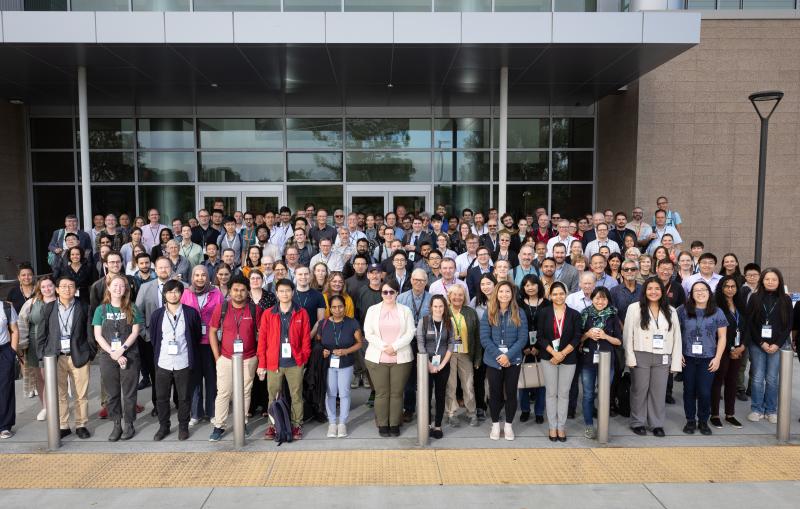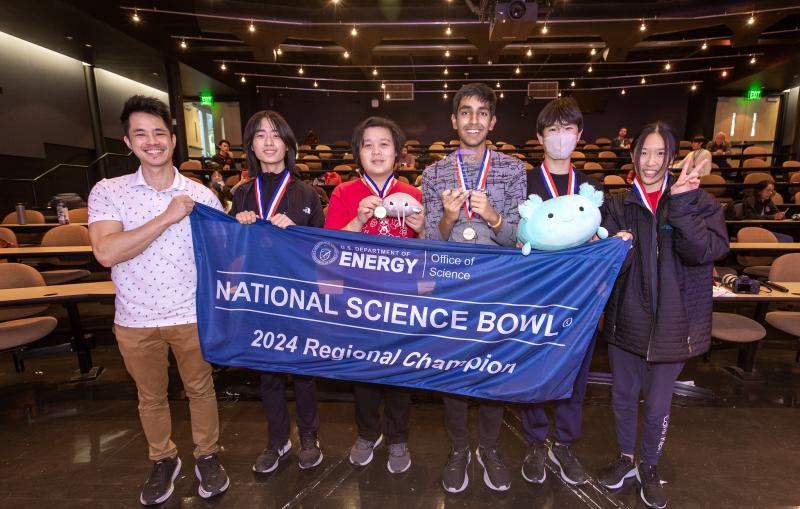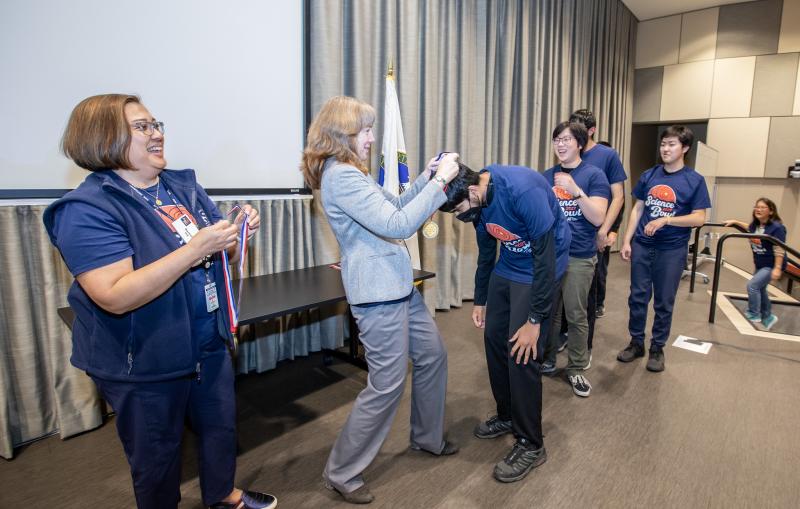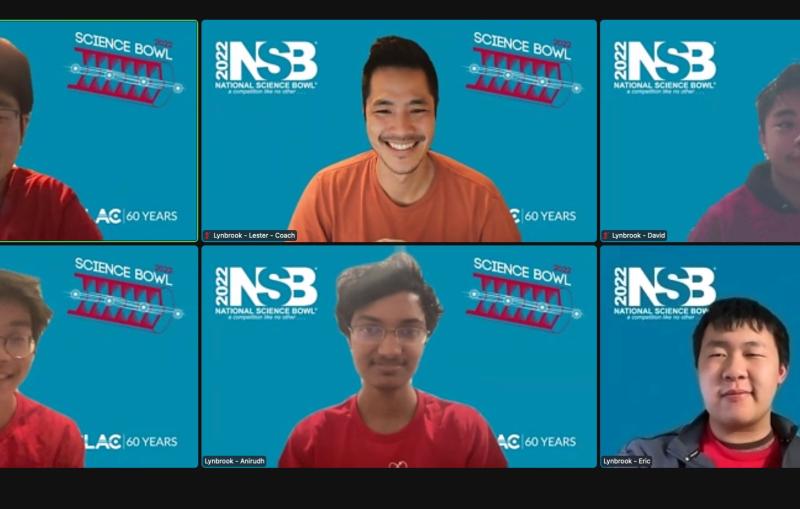Secretary of Energy Rick Perry Visits SLAC, Tours Site of X-ray Laser Upgrade
The DOE’s top official met with SLAC staff and toured the Linac Coherent Light Source X-ray laser, where a superconducting upgrade is underway.
Secretary of Energy Rick Perry visited the U.S. Department of Energy’s SLAC National Accelerator Laboratory today, where he toured the site of a superconducting upgrade to the accelerator that powers the lab’s X-ray laser and met with employees in a town hall meeting.
“We enjoyed the opportunity to share with the Secretary some of our advanced scientific facilities and programs, current and future,” said SLAC Director Chi-Chang Kao, “and to hear from him about the importance of our work to the Department of Energy and the country.”
The Secretary peered down the 567-foot-long “undulator hall” where accelerated electrons are bounced through thousands of special magnets to generate powerful X-rays for experiments at the lab’s Linac Coherent Light Source (LCLS), the world’s first hard X-ray free-electron laser.
Secretary Perry then spoke with scientists at the X-ray Pump Probe experimental instrument where those X-rays are used to take snapshots of atoms and molecules at work in nanoscale objects, such as proteins, viruses and materials with special properties for future energy or manufacturing applications. There, the Secretary tried his hand at aligning an X-ray camera by manipulating a precision robotic arm.
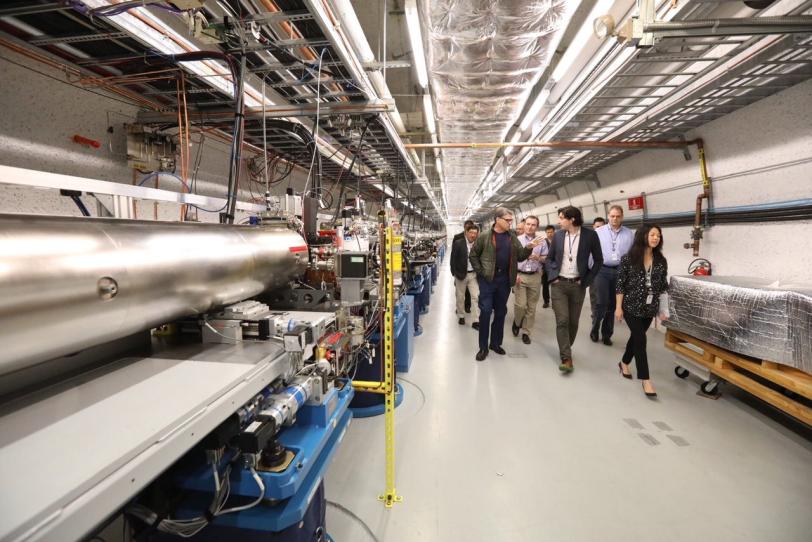
LCLS is a DOE Office of Science user facility. Construction began in 2016 on an upgrade called LCLS-II, scheduled to open for experiments in 2020.
At the site of the LCLS-II cryoplant – a powerful chilling plant that will keep a future superconducting accelerator at close to absolute zero, roughly the temperature of outer space – Secretary Perry learned more about how this upgrade will significantly boost the power and capacity of LCLS, adding a second X-ray laser beam that fires up to a million pulses per second and shines 10,000 times brighter, on average, than the current one. LCLS-II will further sharpen our view of how nature works at the atomic scale and help advance transformative technologies of the future, including novel electronics, life-saving drugs and innovative energy solutions.
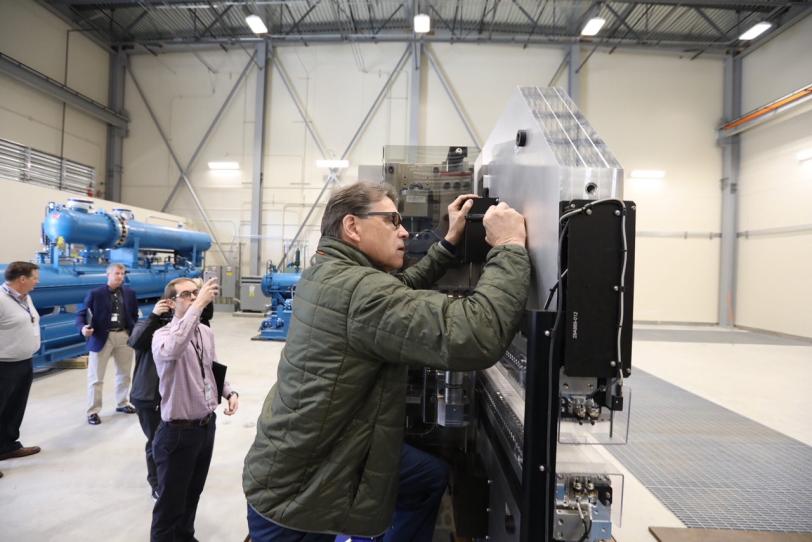
Secretary Perry also met with Persis Drell, Stanford University provost and former director of SLAC. SLAC is operated by Stanford and the relationship has been critical to the lab’s founding and development.
“It’s great that Secretary Perry came out and saw the excitement here because it makes it much more real,” Drell said after listening to the Secretary’s remarks to lab staff. “I thought he did an outstanding job of communicating that he really values the people who dedicate their lives to working at the national labs.”
In his remarks during the town hall meeting, Secretary Perry emphasized the importance of the national laboratories in keeping America at the cutting edge of scientific discovery and technology innovation.
“I believe that we have a role in getting concepts out of the lab and to the people who could see the benefits,” he said. There are always skeptics when technology is introduced, he added, referring to the early days of LCLS, “but every now and then you make some Jell-O stick on the wall…and it changes people’s lives forever. That’s what you do, that’s what the DOE does, and that’s why I’m proud to be a part of it.”
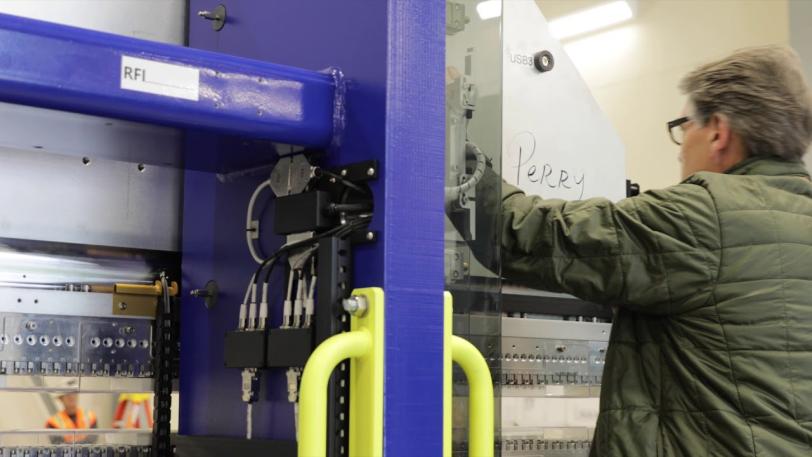
Secretary of Energy Rick Perry Visits SLAC
Contact
For questions or comments, contact the SLAC Office of Communications at communications@slac.stanford.edu.
SLAC is a multi-program laboratory exploring frontier questions in photon science, astrophysics, particle physics and accelerator research. Located in Menlo Park, Calif., SLAC is operated by Stanford University for the U.S. Department of Energy's Office of Science.
SLAC National Accelerator Laboratory is supported by the Office of Science of the U.S. Department of Energy. The Office of Science is the single largest supporter of basic research in the physical sciences in the United States, and is working to address some of the most pressing challenges of our time. For more information, please visit science.energy.gov.
